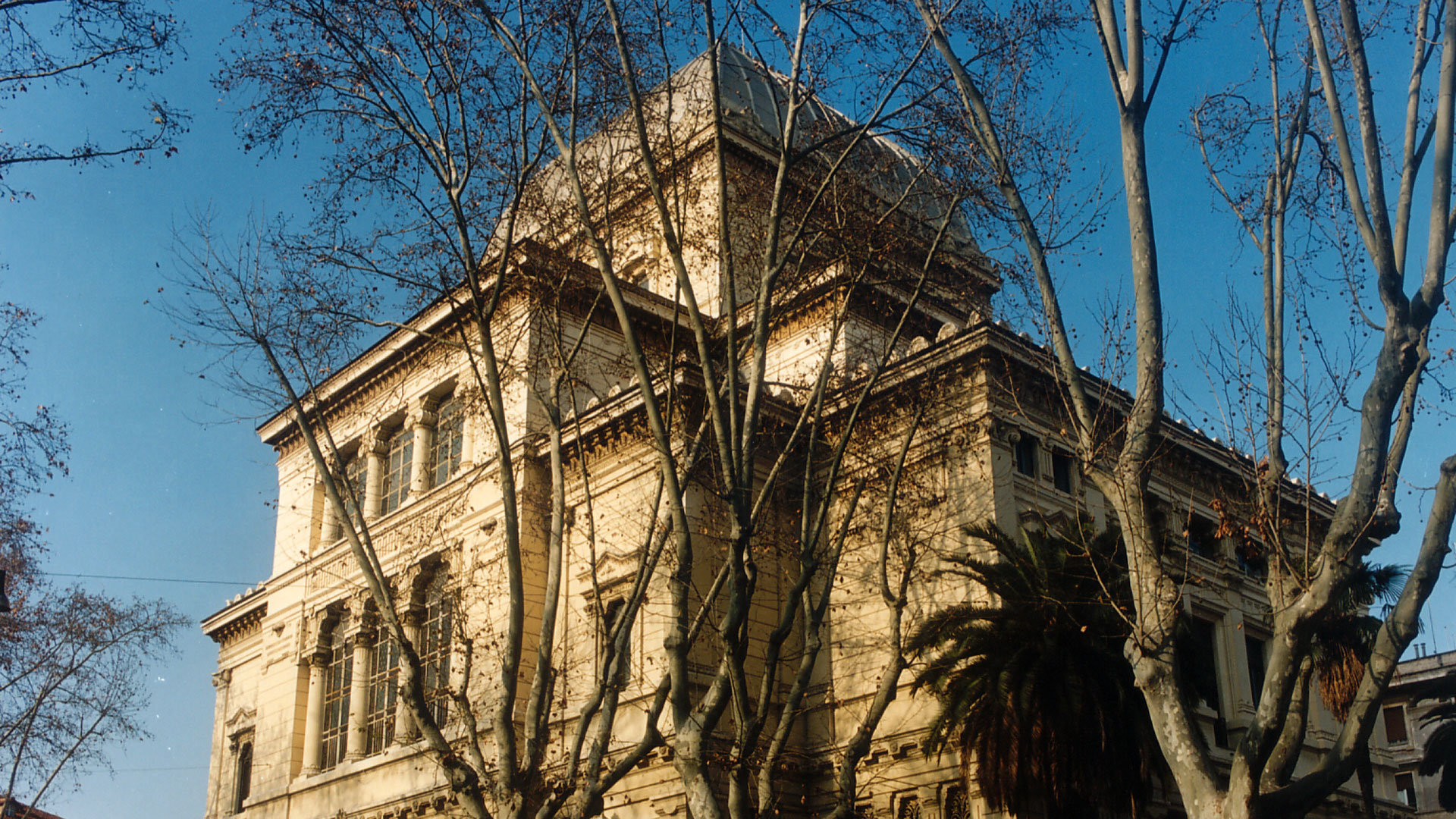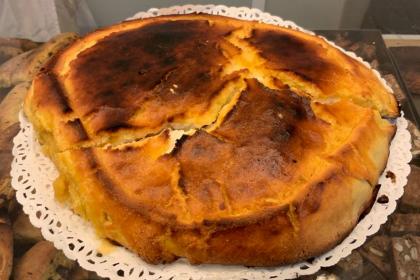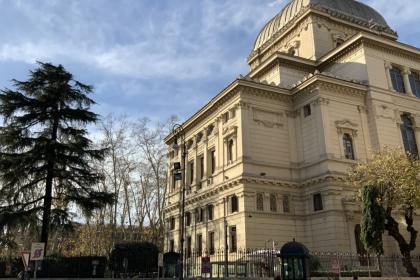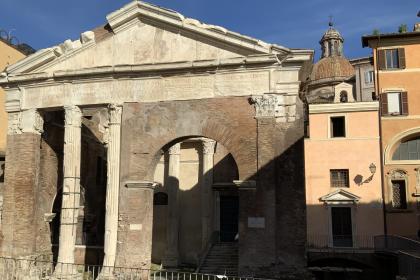
Following the breach at Porta Pia in 1870 and the subsequent conquest of Rome by the Italian army, the Jews finally achieved full emancipation, equal civil rights, and the possibility of erecting, after centuries of limitations, their monumental synagogues.
Visible from any point in town, the Temple was built on the site of the harsh Risorgimento battles under the aegis of the monument to Garibaldi. Piazza delle Cinque Scole was the right place because of its overlook over the Tiber, and location between the two major symbols of Roman freedom: the Campidoglio Hill, the seat of the Major, and the Janiculum Hill.
The Tempio Maggiore, one of the largest synagogues in Europe, was built on one of the four plots of land coming from the demolition of the most decayed areas of the Jewish Ghetto of Rome, in the same place where the Jews had been locked up for centuries. The site was demolished and reclaimed following the 1888 zoning plan.
Work began in 1901 with the endorsement of King Vittorio Emanuele II, who also granted citizenship to Italian Jews and gave the order to rebuild the Ghetto of Rome. The Synagogue was inaugurated with great pomp on 28 July 1904.
It is a massive large building with a square base, surmounted by an imposing mass covered with aluminum in an eclectic style inspired by Assyrian-Babylonian shapes.
The basement houses the rich Jewish Museum of Rome and the Spanish Temple, a small synagogue set up with some of the furniture from the "cinque scole" (five schools), the synagogues in the ancient Ghetto: Castilian, Catalan, Siciliana, Nova, and Italiana.
For the Tempio Maggiore, the furnishings of the old synagogues were used, while the leading Art Nouveau artists of the time made the decorations. The stained glass windows are the work of Cesare Picchiarini, and the paintings are by Domenico Bruschi and Annibale Brugnoli. Oriental motifs richly decorate the interior. The pulpit (Bimah) is in Art Nouveau style, enriched by a precious pipe organ, built in 1904 by the Rieger brothers.
Today, you can visit the Synagogue from Sunday to Thursday; Saturday is entirely dedicated to worship.
After the Temple, you should visit the Ghetto and the famous Portico d’Ottavia. Do not miss the opportunity to enjoy one of the delicious dishes of the traditional Jewish-Roman in one of the many kosher restaurants.
The tradition at the table; the Roman-Jewish cuisine

The old Jewish Quarter

 Condividi
Condividi
The Portico of Octavia

 Condividi
Condividi
Information
For opening and closing timetables and the conditions of visit, please contact the contacts indicated.
Please note: The Main Temple can be visited with the Jewish Museum of Rome ticket.
Before purchasing online, read the conditions of sale in Conventions.
 Condividi
Condividi
Location
To find out about all accessibility services, visit the Rome accessible section.











































